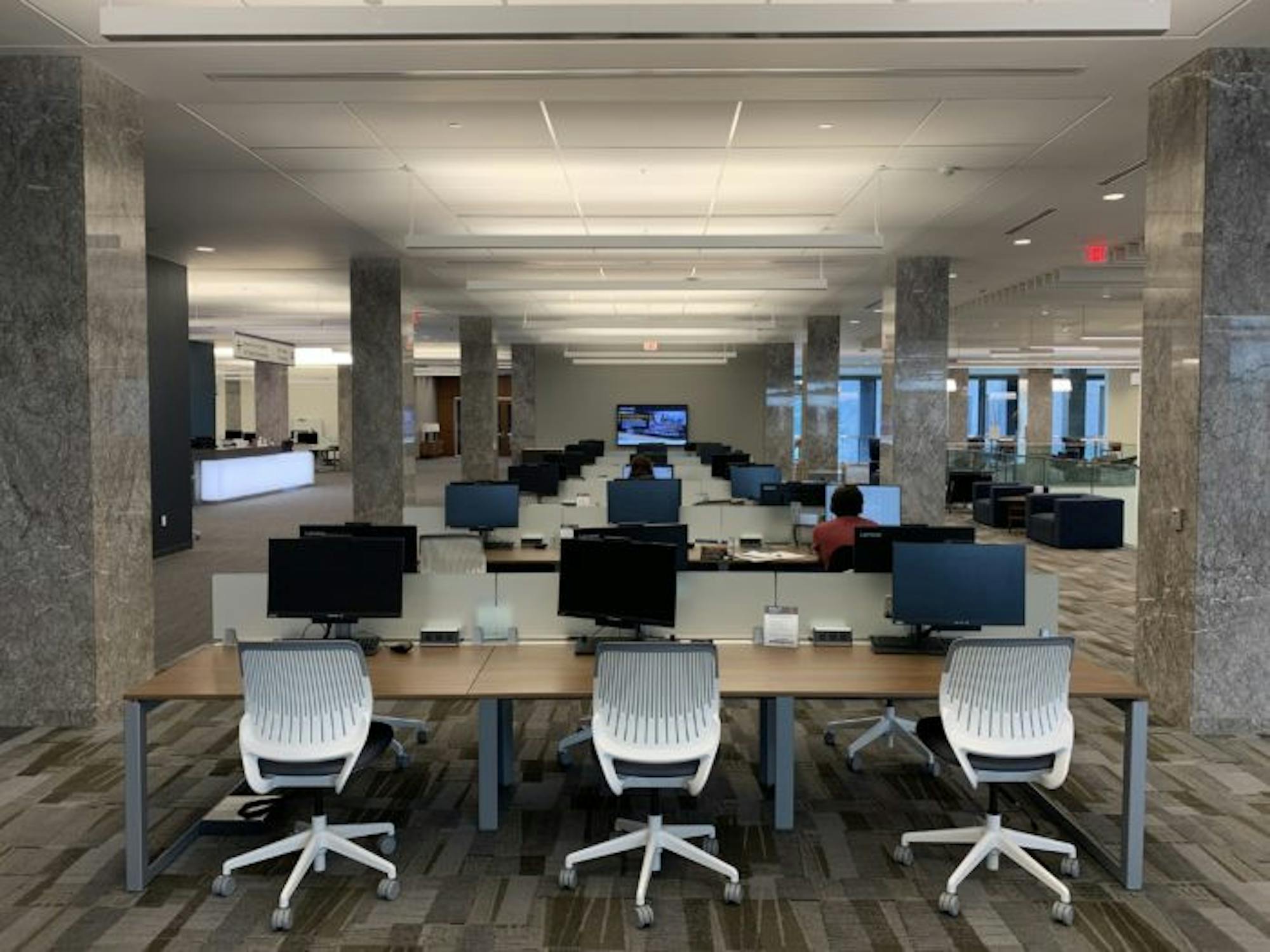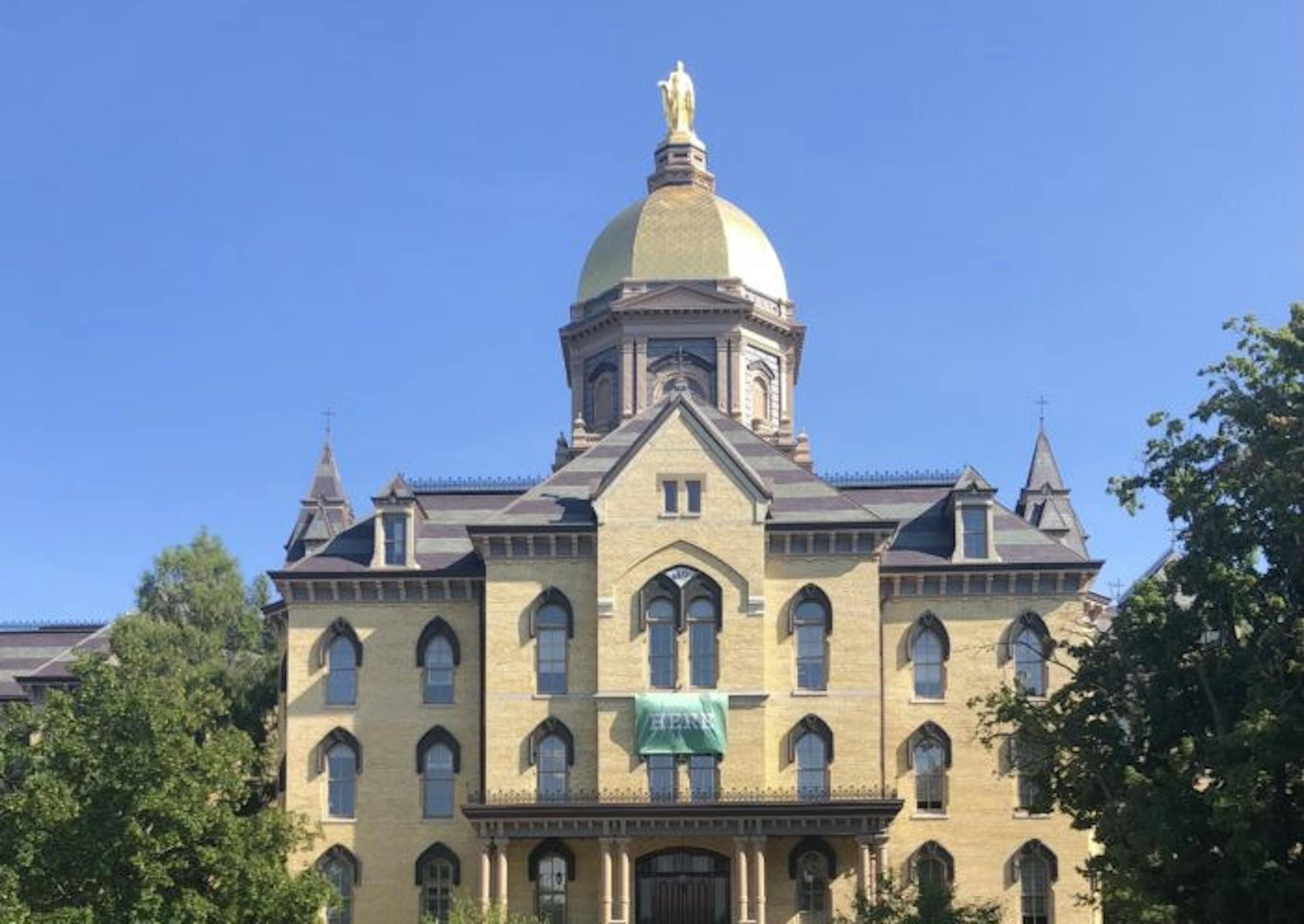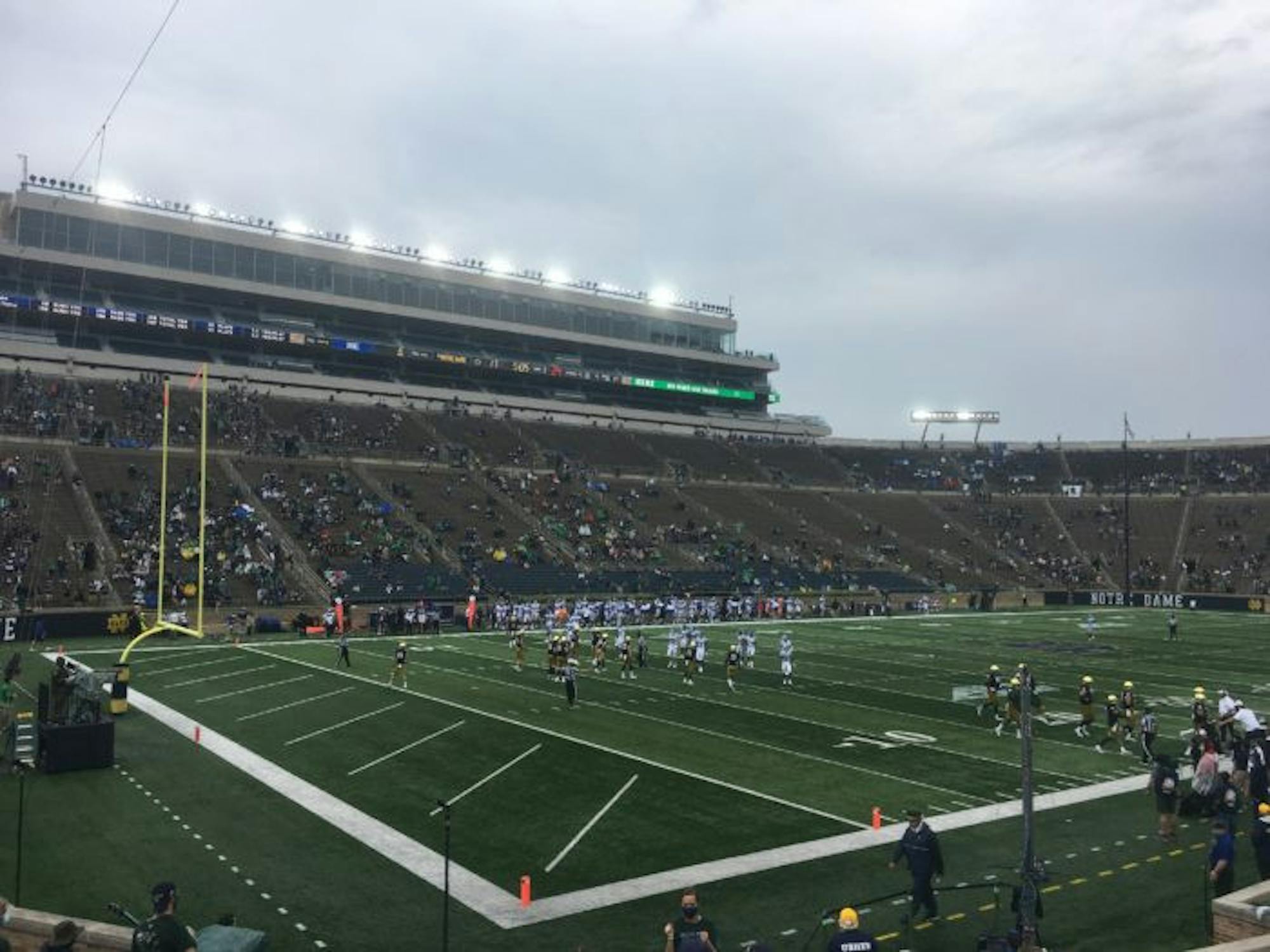At the beginning of 2020, COVID-19 was rapidly spreading around the world, and life for students began to change drastically.
Rome study abroad programs were suspended Feb. 28. The first case of coronavirus in Indiana was confirmed March 6. Students in the Washington program were forced to leave after their housing closed March 10. Yet, students and faculty throughout the tri-campus community were still awaiting the status of the rest of the spring semester in South Bend.
Then, in a rapid fashion, the emails came with coronavirus updates.
One year ago today on March 11, 2020, the tri-campuscommunityshut down — at least, physically — due to the coronavirus outbreak. Students were ordered to stay at home, go home or request alternative housing options if neither of those options were possible.
Carlota Fernandez, a Notre Dame sophomore from Barcelona, Spain, had canceled her flight to go home for spring break, and opted to stay with a friend from Connecticut for the break instead. When she learned the University was shutting down, Fernandez made the decision to stay in Connecticut until she could move out of her dorm.
“The U.S. put out the act saying that only U.S. citizens were allowed to go back in, and my visa does not make me a citizen obviously, so if I left, I couldn't come back in,” Fernandez said. “And for me to be back at home with my sister — not doing anything and with the time change — to be able to take classes would have been so hard for me to concentrate.”
Zooming through the spring semester
After an extra week of spring break, classes started back up the week of March 23. Professors taught entirely over Zoom, either synchronously or asynchronously.Sara Maurer, Notre Dame English professor, taught two seminar-style classes at the time. She decided to split her classes into a 20-minute recorded lecture and two separate 45-m

inute live discussions.
“I wanted to make sure everybody talked, too, because that's the seminar experience,” Maurer said.
Although being online was difficult, Maurer said she felt a sense of community was maintained as students had already had half a semester to meet one another in person.
Originally, the virtual semester was only supposed to last a short period of time. However, toward the end of March, the three schools announced distanced learning would continue until the end of the semester as the pandemic continued to worsen.
Students living on campus were not allowed to retrieve their belongings until May and June. Fernandez said she flew back home to Spain from Chicago after she drove to South Bend to move out.
Shortly after the spring semester ended, the tri-campus leaders announced plans to invite students back to campus in the fall, insisting that proper safety measures would be put in place.
University President Fr. John Jenkins wrote an op-ed in the New York Times, saying reopening was “worth the risk.”

“We will also institute extensive protocols for testing; contact tracing and quarantining; and preventive measures, such as hand-washing, physical distancing and, in certain settings, the wearing of masks,” Jenkins said in the op-ed. “This is how we can restore in-person classes safely.”
Jenkins later tested positive for coronavirus after attending the nomination of Supreme Court Justice Amy Coney Barrett in the White House Rose Garden, resulting in a surge of national news coverage.
Starting the 2020 fall semester two weeks early allowed students to travel home for Thanksgiving and remain there for a 10-week winter break, so as to not be exposed and bring the virus back to campus after the Thanksgiving holiday.
In order to return in the fall, Fernandez had to quarantine for 15 days in a country that the U.S. was allowing flights to fly out of and into the country. Spain was not on the list. Fernandez and her sister, a Notre Dame first-year, debated on the safest country to travel to, and eventually flew to Turkey by themselves and stayed in a hotel.
“We did touristy things, but we were alone and in a completely different country,” Fernandez said.
On their sixth day in Turkey, Fernandez said they received a notification from Notre Dame International that those with F1 student visas were being allowed into the country.
“We packed our things and moved our flight to the next day,” Fernandez said.
Returning to a converted campus
Once the fall semester started, campus life looked different, both academically and socially. Masks were to be worn at all times. Dining halls were open for takeout only. Daily health checks were required. Some courses were still taught online.Having a partner at home who is immunocompromised and a niece and a nephew who lost their father to COVID-19, Maurer made the decision to teach her classes online in the fall to feel safer.
“I didn't know how it was going to go and I felt like I had a responsibility to my family to [teach] online,” Maurer said.
Adjusting to campus life was especially challenging for first-year students, who had limited opportunities to meet and interact with new people upon moving to a new environment. The tri-campus still had the yearly Welcome Weekend activities, but many were virtual or only interhall.
Holy Cross first-year Gabriana Schommer said although the welcome activities were modified, she felt supported by the Holy Cross community. In addition, she noted that her previous participation in the College’s Saints and Scholars program helped her know people prior to starting the year.
That feeling of support has continued throughout her first year, Schommer said, even though the experience has been difficult and not what she expected.
“I have still been able to meet new people and become close to people, even in a pandemic,” she said. “Everyone else is kind of feeling the same way, and wants to make friends and be close to people, so it kind of just inspires people to come together.”
Faculty members have also felt the distance from the typical community. English professor Julia Dauer is currently in her first year of teaching at Saint Mary’s, and said she finds the maintained community between students and faculty to be “sustaining.”
Dauer has also taken the opportunity of the pandemic setting to teach a course titled “Literature and Medicine,” in which students study the language that is used to talk about illness and disease with a special focus on coronavirus.
“I've really retooled the class because we are trying to live through a long medical emergency, and I think literature helps us understand what's happening and analyze and critique it,” Dauer said.
With the largest student population out of the three colleges, Notre Dame has made headlines with the potential for high positivity rates on campus to impact the local community. Eight days into the fall semester, the University shut down campus after recording a total of 147 positive cases.
The high numbers of positive cases on campus meant hundreds of students spending weeks in quarantine or isolation, leading to a growing sense of fear and loneliness. Even well into the 2021 spring semester, hundreds of students are finding themselves in quarantine due to testing or exposure with a “close contact.”

Even with limitations on socializing this year, the students and faculty have found ways to keep the tri-campus community alive. Students were allowed to attend football games, student groups found creative ways to hold events and dorm communities have become creative with virtual offerings.
Although the COVID-19 vaccine is not yet widespread and available to all students, Indiana recently opened vaccinations to individuals 50 and older, signaling a sign that more normal circumstances will be coming to campus in the future.
“When we heard, we were really giddy and texting from professor to professor,” Maurer said. “We were really excited, so I think there's a general lightening of the mood now that we can imagine accessing [the vaccine].”













